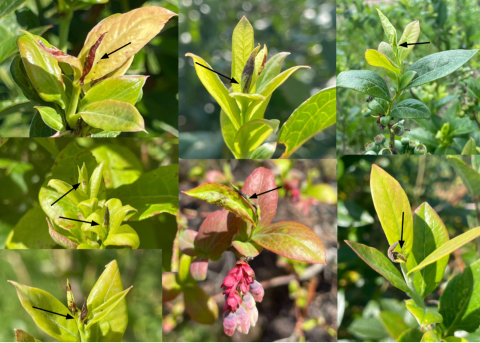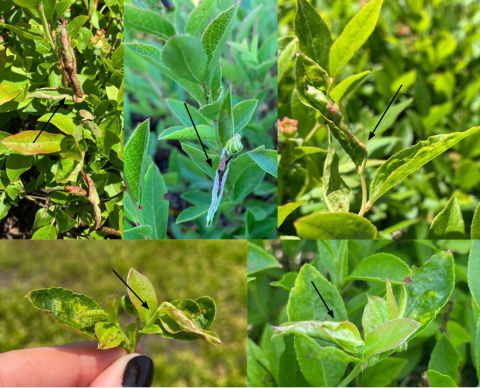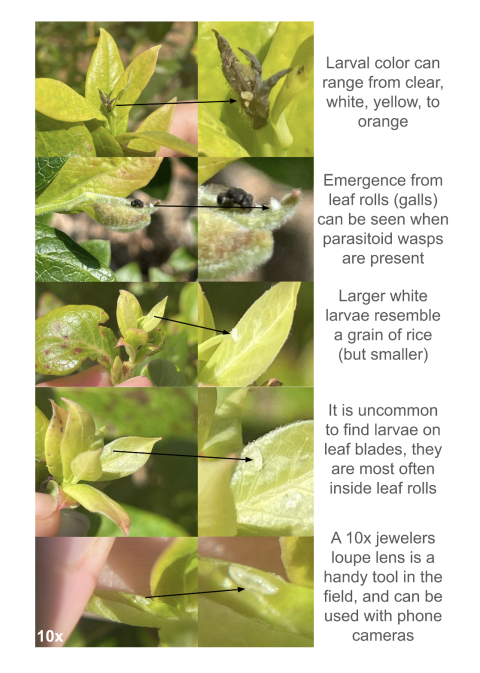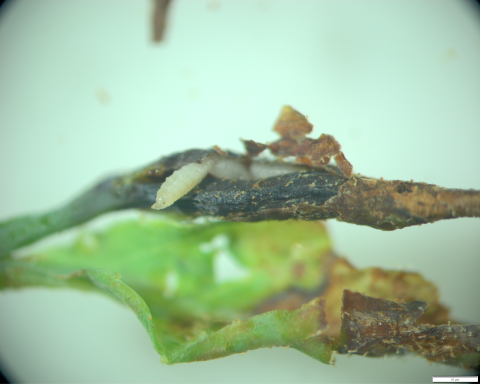Novel Detection of Blueberry Gall Midge in New Hampshire Blueberry Crops
Researchers from the UNH Insect Collection have detected two previously unreported species of blueberry gall midge (Dasineura oxycoccana and Prodiplosis vaccinii) in the state's blueberry crops. While these flies are native to North America, they pose a significant threat to blueberry production when present in large populations. The microscopic larvae feed on young blueberry shoots and flower buds, causing stunted growth and reduced fruit yield. Crop loss from gall midge damage can reach up to 80%, with long-term impacts on plant health as well. Both species were observed in northern highbush blueberry (Figure 1) in Durham and Stratham, while Dasineura oxycoccana is also known to attack lowbush wild blueberry (Figure 2) in Maine. Blueberry gall midges are sometimes known by other common names such as blueberry tip midge or blueberry tip worm.
Farmers and gardeners are advised to inspect their blueberry plants closely for signs of infestation, which include bundles of discolored leaves at the tips of branches and flower bud abortion (Figure 3). Leaf damage is sometimes mistaken for the effects of normal tip die-back, frost damage, or boron deficiency. While researchers have not yet observed infestations in flower buds in New Hampshire, the species that is known to attack flower buds (D. oxycoccana) is present. Blueberry gall midge can co-occur with thrips, other plant feeding insect pests, and powdery mildew, so close examination of stressed plants is vital.
Multiple generations have been observed in New Hampshire blueberry crops throughout the season, with the majority of the flies’ life cycle spent as larvae inside of buds and leaf bundles. Dissection of flower or leaf buds under 10x magnification about one week after bud set or successive vegetative flushes is advised to detect blueberry gall midge presence (Figure 4). Prevention is key, as nursery and transplanted blueberry bushes can serve as a Trojan horse for gall midge eggs and larvae. These should be adequately quarantined before planting among other bushes. If you suspect an infestation, please take photos and send them to your local extension specialist.

Figure 1: Galls in highbush blueberry.

Figure 2: Galls in lowbush blueberry.

Figure 3: How to spot blueberry gall midge symptoms in the field.

Figure 4: Blueberry gall midge larvae in leaf tip.
All photo credits: Monique Raymond.
Additional Resources:
Fact Sheet from University of Maine Cooperative Extension
Michigan State University Extension Bulletin
Monitoring and Management Article in Growing Produce
